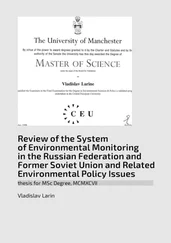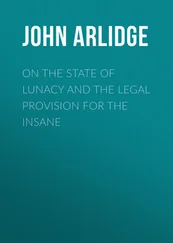Economic instruments filled out the Russian toolbox. They were most often used to twist arms on particulars and to produce prosaic commercial advantage for Russian companies, but at times they did rise to the level of geo-economics. Centrality, purchasing power, resource endowment and the hardwired legacy of the Soviet economy gave Moscow substantial advantages. Even though Russia’s economy was in contraction until the late 1990s, there was enough capital accumulation to facilitate investment abroad, including in disputed territories like Transnistria, South Ossetia and Abkhazia. [59] For details on activities in Transnistria, see Rebecca Chamberlain-Creanga and Lyndon K. Allin, ‘Acquiring Assets, Debts, and Citizens: Russia and the Micro-Foundations of Transnistria’s Stalemated Conflict’, Demokratizatsiya: The Journal of Post-Soviet Democratization , vol. 18, no. 4, Fall 2010, pp. 329–56.
Energy afforded a special abundance of opportunities. Russia was the primary purveyor of oil and natural gas to all but the four other former Soviet republics that had their own hydrocarbon resources (Azerbaijan, Kazakhstan, Turkmenistan and, to a lesser extent, Uzbekistan); it routinely sold on credit and at below-market prices, making for buyer dependence. It also initially controlled all of the former USSR’s export pipelines, including those leading to the profitable European gas market, giving it a financial lever with its four fellow exporters. At one time or another, it bullied uncooperative partners by raising energy prices or suspending deliveries, calling in debts, slapping tariffs on imports or excise taxes on exports, and restricting access for non-Russian oil and gas exporters to its pipelines. The scholar Daniel Drezner recorded 39 occasions when the Kremlin had recourse to such tactics between 1992 and 1997. It produced concessions in 15 cases, or 38%, a respectable rate of success by the standards of political economists. [60] Daniel W. Drezner, The Sanctions Paradox: Economic Statecraft and International Relations (Cambridge: Cambridge University Press, 1999), pp. 131–248. See also Margarita Balmaceda, ‘Gas, Oil, and Linkages between Domestic and Foreign Policies: The Case of Ukraine’, Europe – Asia Studies , vol. 50, no. 2, March 1998, pp. 257–86; Tor Bukkvoll, ‘Off the Cuff Politics—Explaining Russia’s Lack of a Ukraine Strategy’, Europe – Asia Studies , vol. 53, no. 8, December 2001, pp. 1141–57; Margarita Balmaceda, Politics of Energy Dependency: Ukraine, Belarus, and Lithuania Between Domestic Oligarchs and Russian Pressure (Toronto: University of Toronto Press, 2013).
Even success came at a price. By resorting to ham-fisted tactics whenever one of its neighbours did not behave to its liking, Russia aroused threat perceptions throughout the region and came to be more feared than trusted by local elites. The bullying also convinced hawks in Washington and European capitals that, if not reinforced, the independence of the post-Soviet states could be a passing phenomenon.
Russia did not limit itself to bilateral knobs and switches. It also operated through a bevy of multilateral institutions, of which the paramount in theory was the umbrella CIS. In the five years after its establishment in December 1991, the CIS stood up an executive secretariat in Minsk, an inter-parliamentary assembly and 12 coordinating councils (for heads of state, heads of government and ministers). It also spawned a flock of around 50 specialised bodies, dedicated to everything from patents to meteorology, civil aviation and plant breeding. All told, the CIS Council of Heads of State had adopted 500 documents by 2004, and the Council of Heads of Government more than 900; the vast majority of these agreements ‘involved a relatively formal bureaucratic framework’. [61] John P. Willerton and Mikhail A. Beznosov, ‘Russia’s Pursuit of Its Eurasian Security Interests: Weighing the CIS and Alternative Bilateral–Muiltilateral Arrangemnets’, in Katlijn Malfliet, Lien Verpoest and Evgeny Vinokurov (eds), The CIS, the EU and Russia: The Challenges of Integration (Basingstoke: Palgrave Macmillan, 2007), p. 50.
Russian efforts were also devoted to more focused schemes for coordination of trade and development that smacked of geo-economics. In September 1993, a convocation of CIS heads of state adopted an Economic Union Treaty, featuring plans for a free-trade zone, a payments union and a monetary union. Subsidiary agreements on trade and tariffs, payments, legal harmonisation and rail transport ensued in 1994, 1995 and 1996. Steering power in the union was to be in proportion to economic output, so that Russia was in the driver’s seat.
Russia inspired virtually all of the agreements inked. But cold realities belied ringing declarations of intent and the facade of teamwork. Not a few of the centrifugal forces unleashed by the disintegration of the USSR raged on unabated, making lofty goals, reports and guidelines all but unfulfillable. The parliament of Ukraine, a co-author of and the second-ranking member of the CIS, refused to ratify its charter. Ukrainian presidents dutifully attended CIS summit meetings while doing their best to ‘derail Russian ideas as early on as at the level of experts, ministers, and prime ministers’. [62] Taras Kuzio, ‘Geopolitical Pluralism in the CIS: The emergence of GUUAM’, European Security , vol. 9, no. 2, Summer 2000, p. 84.
In the ambit of economic coordination, the provisions of the 1993 treaty were honoured in the breach. Protectionism, national currencies (following the collapse of the short-lived rouble zone in 1993) and cumbersome banking rules were put in its place and intra-regional trade plummeted by two-thirds. The centrality of the CIS accord was undercut by the decision of Russia, Belarus and Kazakhstan in 1995 to forge a trilateral customs union, which later garnered two more Central Asian adherents and the lofty title of the Eurasian Economic Community. [63] Russia and Belarus further muddied the picture by forming a mostly fictional ‘union state’ in 1997.
This entity, too, made little headway. Yet another geo-economic structure, the Single Economic Space (SES) among Russia, Belarus, Kazakhstan and Ukraine, was announced in September 2003. [64] The Ukrainians inserted a clause into the 2003 agreement specifying that the new entity was not to act contrary to their constitution or to the objective of fostering integration with the European Union.
In keeping with the trend, it proved to be another paper tiger.
Entropy was, if anything, more manifest in the security sphere. Six CIS members – Armenia, Kazakhstan, Kyrgyzstan, Russia, Tajikistan and Uzbekistan – had signed onto the Tashkent Treaty on collective security in 1992; three others (Azerbaijan, Belarus and Georgia) did so in 1993 and the treaty came into force in 1994. Lacking a common external enemy, the treaty had no practical consequences in the 1990s, particularly since several of its members were for all intents and purposes at war with each other. An institutional arm to carry out its provisions did not exist until the Collective Security Treaty Organization (CSTO) was created in 2002, ten years after the pact. Membership by that point was down to six: Russia, two of six In-Betweens (Armenia and Belarus) and three of five Central Asians (Kazakhstan, Kyrgyzstan and Tajikistan). [65] Uzbekistan, an original party to the treaty (which was signed in its capital city), withdrew from it in 1999, as did Azerbaijan and Georgia, which had joined in 1993. Uzbekistan was to rejoin in 2006, only to pull out again in 2012.
The CSTO operates out of a Moscow headquarters and conducts exercises among its members; in theory it has even had a rapid-reaction force at its disposal since 2009. In practice, the ‘collective’ element of its mission has, given power asymmetries, always been lacking; it functions mostly as a Russian security blanket for the smaller neighbours.
Читать дальше











